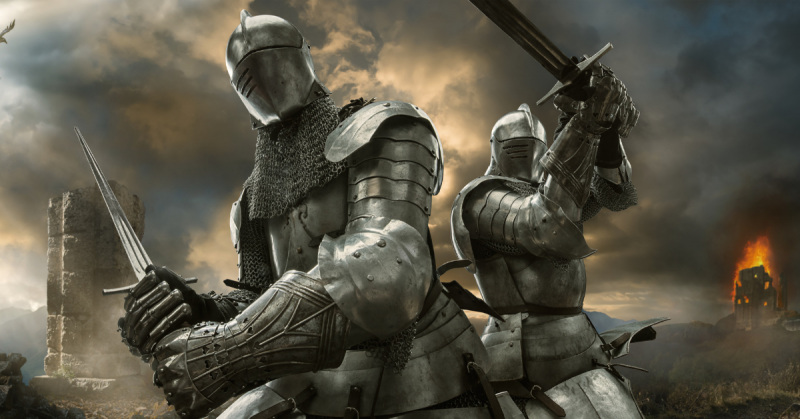The Fourth Crusade was an armed military expedition convened by Pope Innocent III, which took place from the year 1202 until 1204 and was intended to take control of the city of Jerusalem, or Holy Land, which was then under Muslim rule. The crusaders never reached the Holy Land.
The Fourth Crusade was also later called the “Commercial Crusade” of the Venetians and the “Byzantine Crusade,” since actions were taken for economic purposes that diverted the crusaders from fulfilling their main objective of capturing Jerusalem. For this reason, the question remains whether it was really a crusade or not.
The call to start this particular expedition was made in the year 1198 by Pope Innocent III, who sought to establish the authority of the Holy See in Jerusalem. This would complete the partial victory achieved in the Third Crusade–the signing of an agreement between Richard I Lionheart, king of England and the Muslim Sultan Salah ad-Din Yusuf, commonly known as Saladin. Their agreement had established that Jerusalem would remain under Muslim power but that Christians, as long as they were disarmed, would have the right to freely make pilgrimages in the city.
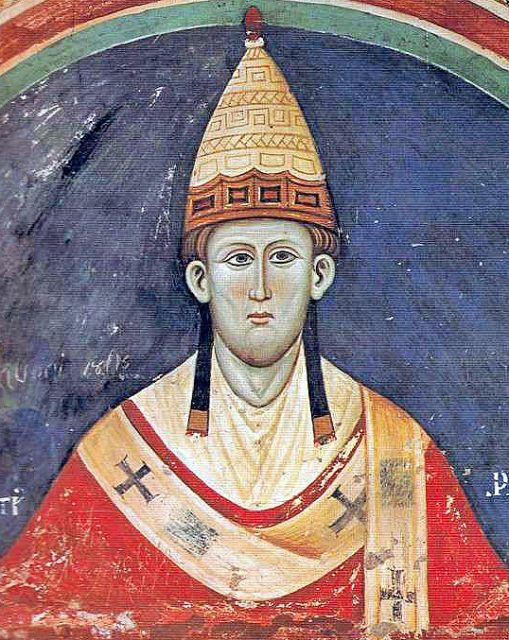
The Fourth Crusade included the participation of Baldwin IX, Count of Flanders and Boniface of Montferrat. The main strategy for the expedition consisted of the invasion of Egypt, the Muslims’ center of power. The Crusaders decided that the best way to reach Egypt was by sea, avoiding the dangers of a prolonged expedition by land. Once Egypt was taken, they would march to Jerusalem.
The economic factor was an important limitation in the attempt to recapture Jerusalem, because the Crusaders did not have the resources or fleet of ships required to carry it out. This triggered important events that completely distorted the objective of the crusade, such as the Siege of Zara (currently Zadar, Croatia) and the capture and sack of Constantinople (now Istanbul, Turkey). These events led to the questioning of the religious nature of the expedition.
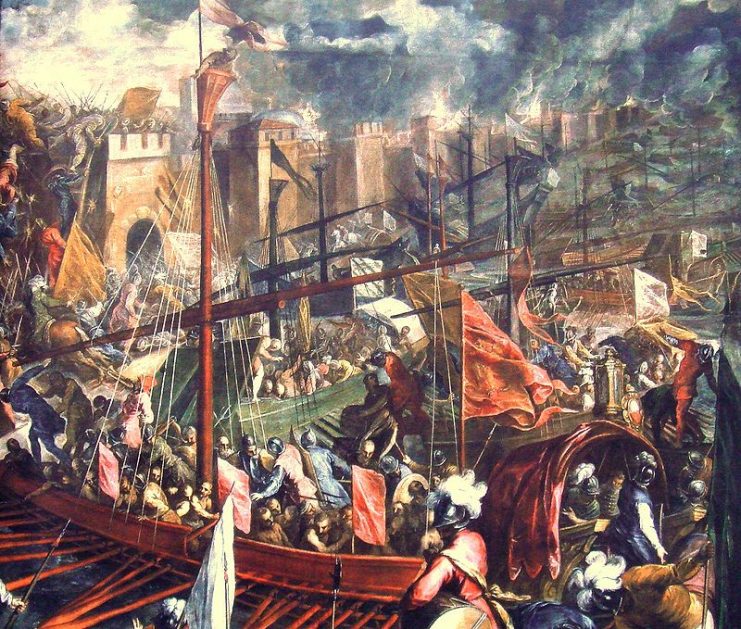
Siege of Zara
In order to obtain the fleet of ships required to transport knights, squires, soldiers, and their supplies, as well as warships to protect them, the Crusaders first went to Enrico Dandolo, Doge of Venice, who undertook to provide the ships. However, at the time of embarkation in Venice in June of 1202, it was not possible to gather enough troops–and payment.
Enrico Dandolo did not miss the opportunity to propose to the Crusaders that he would postpone the payment of their debt in exchange for help in recapturing the city of Zara, which was dominated by the King of Hungary. Venice considered this region a strategic point to expand their commercial relations, and therefore had always tried to conquer it. Due to their need to cover the debts acquired in Venice, the Crusaders accepted the doge’s offer, despite not having the approval of Pope Innocent III to carry out the expedition.
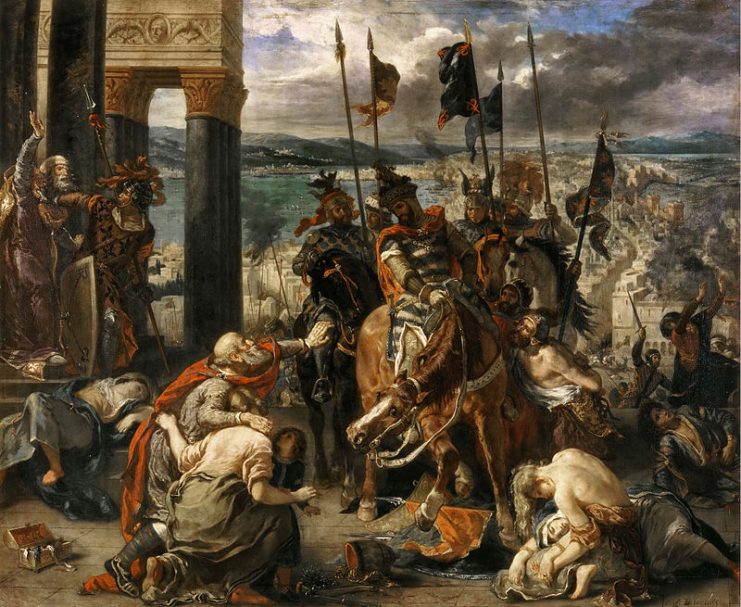
The siege of Zara took place in the year 1202. During the invasion the lives of the citizens were respected, but the city was subjected to sack without any kind of restraint. This action was questioned by Pope Innocent III, who strongly condemned the event and excommunicated the leaders of the Crusade and the Venetians.
A New Deal
According to the original plan, after carrying out the capture of Zara the crusaders would sail to Egypt. But before continuing with their journey, they met the Byzantine prince Alexios IV Angelos, son of the recently dethroned Byzantine emperor Isaac II Angelos. Isaac II Angelos had previously been overthrown by his brother, and Alexios proposed to take the city of Constantinople to assist his father to regain the throne.
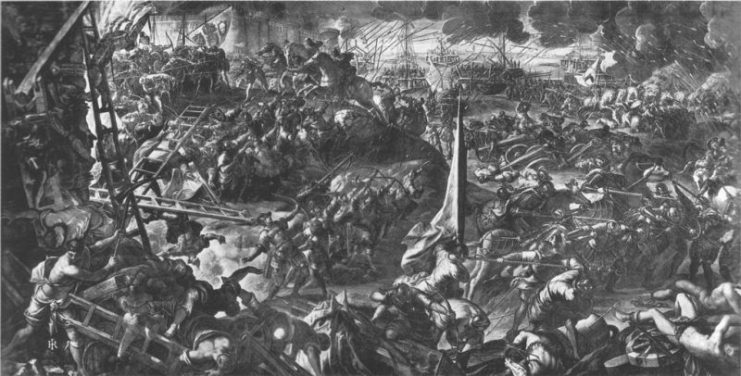
In exchange for help from the Crusaders in this quest, Alexios IV Angelos offered money and the resources of the empire for the reconquest of Jerusalem, and also promised that the Byzantine Orthodox clergy would adopt the Roman rites, complying with the ceremonial guidelines of the Roman Catholic Church.
Because the Crusaders continued to experience serious economic problems, they accepted this new proposal that would cover all the expenses of the Crusade–although this meant deviating again from the plan to recapture Jerusalem.
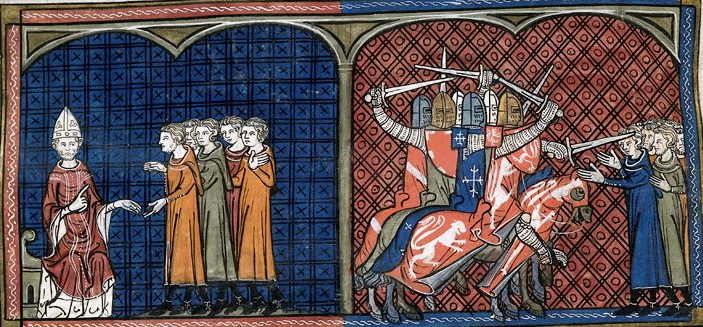
Capture of Constantinople.
The assault on Constantinople was made in the year 1203, achieving the recovery of the city and with this, the coronation of Alexios IV as Byzantine Emperor as well as his father. In order to fulfill the promises made to the Crusaders, the Emperors established new taxes, which quickly produced uprisings throughout the Byzantine Empire.
Emperor Alexios IV died as a result of the revolts that arose in Constantinople, and failed to fulfill his promises to the Crusaders. Since they did not receive the expected payment, the Crusaders decided to invade the city again in April of 1204, and subjected the city to days of massacres and looting as if it were a Muslim city.
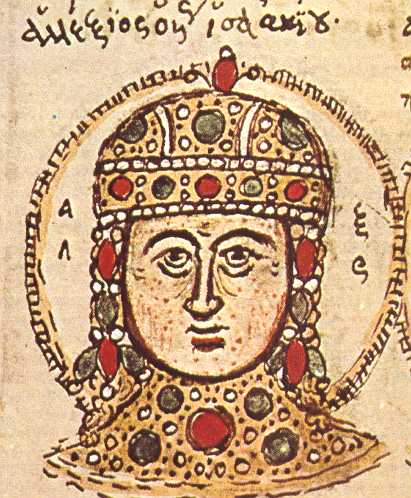
Statues and riches were destroyed in fires, libraries were burned, churches were stripped of their ornaments, and there was no mercy shown to innocent maidens and virgins consecrated to God.
Once order was restored in the city, the Crusaders proceeded to create what they called the Latin Empire of Constantinople. The heir of the first monarchy was Baldwin IX, Count of Flanders. The Latin Empire lasted until the year 1261 when Michael VIII Palaiologos, Emperor of Nicaea, took power and the Byzantine Empire re-emerged.
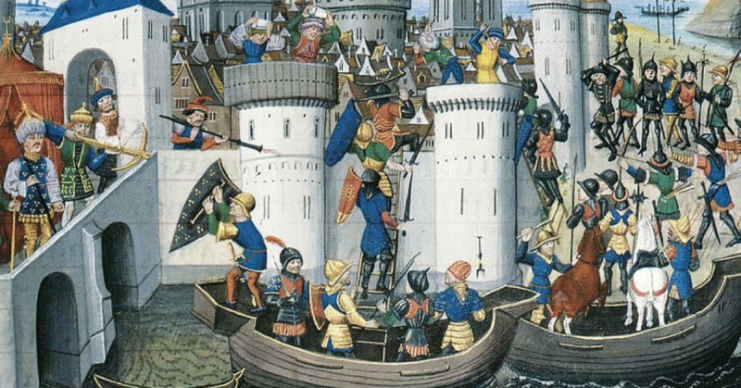
The wealth obtained during the sacking of Constantinople was divided among the army of the Crusaders, Baldwin IX of Flanders, and the Venetians, who had also participated in the venture.
Was the Fourth Crusade really a crusade?
After the creation of the Latin Empire, the Fourth Crusade was terminated without having fulfilled the original objective of recovering the Holy City of Jerusalem.
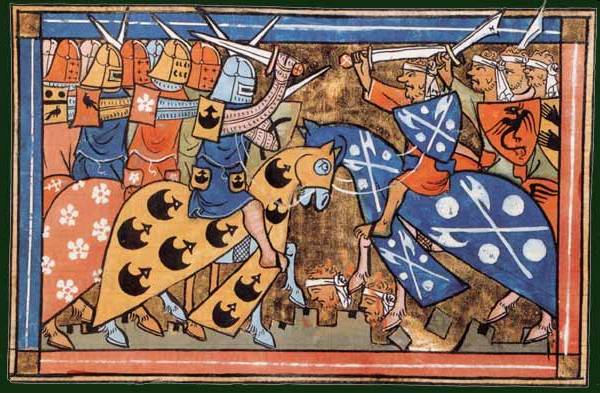
The behavior of the Crusaders during the occupation of Zara and Constantinople made the Byzantines wonder, how was it that Christians, desiring to gain new territories for Christianity, had acted in that way?
The religious reasons that gave origin to the crusade were not enough to prevent the Crusaders from carrying out atrocious acts during the taking of the cities. The Fourth Crusade not only failed in its purpose, but also, the distance between eastern and western Christendom increased as a consequence.
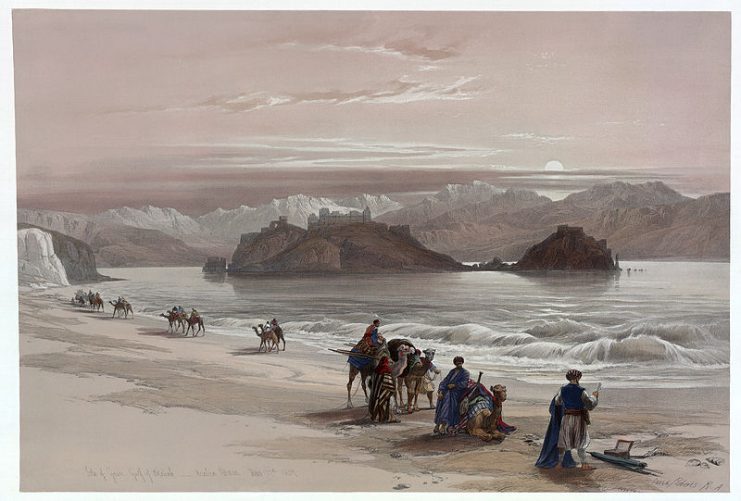
Read another story from us: Decline of an Empire: The Fourth Crusade’s Sacking of Constantinople
Despite another new crusade, the treaty signed at the end of the Third Crusade by Richard I and Saladin remained in force until 1228, when the Sixth Crusade led by Frederick II managed to conquer Bethlehem, Nazareth and Jerusalem. A 10-year truce was reached through diplomatic channels with Malik al-Kamil, Sultan of Syria and Egypt.
